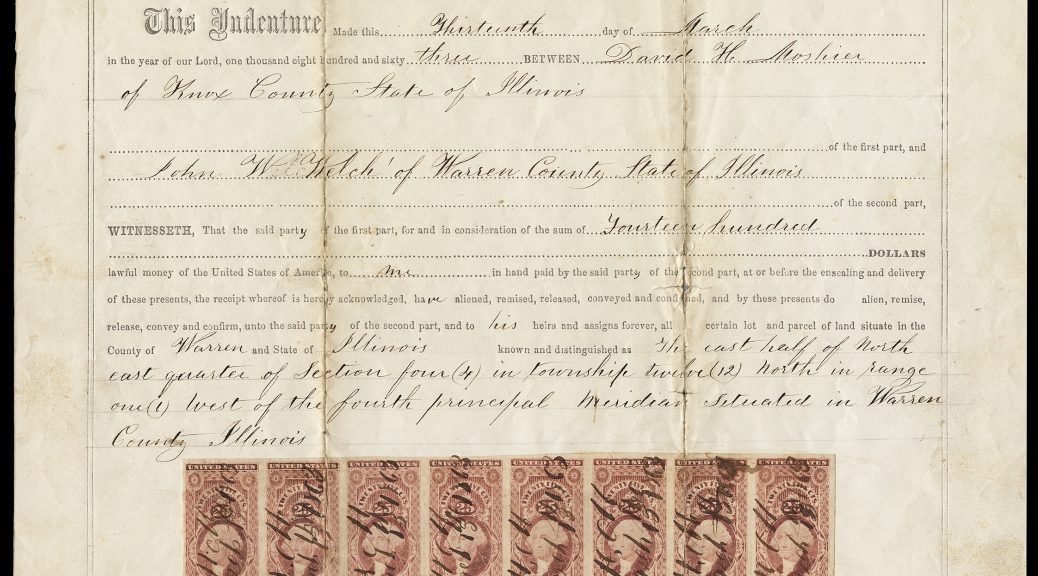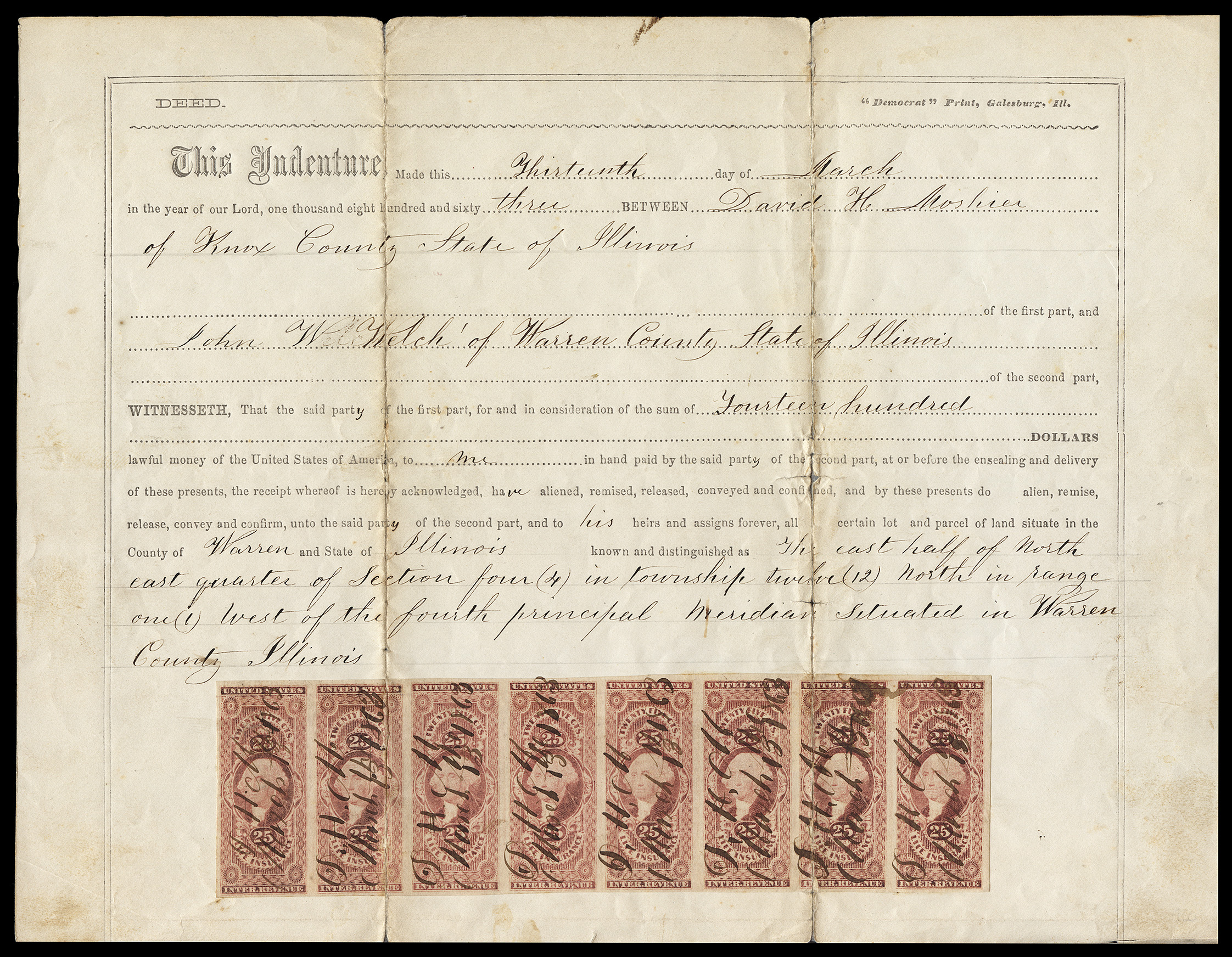
When A Multiple Isn’t: An Example Of The Reality When Dealing With Low Populations
tl;dr: When you encounter something that is extremely scarce/rare, with an extant population in single digits, beggars can’t be choosers. Do you pick up an example that has condition issues, or do you pass it by in hopes of finding a better one? What if it is a discovery example?
I picked up the document below from Denny Peoples when he set up at our local show last month. It has issues, but as far as I know it is unique… as Denny would say, “Find another one!”
It’s a horizontal strip of 8 of the 1st issue 25-cent Life Insurance imperforate (Scott #R47a), used on a March 1863 indenture from Knox County, Illinois.
Sadly, the document folds are so severe that they completely sever the multiple in 2 places, effectively creating two pieces of 1.5 stamps and a center strip of 4.
Were it fully intact, it would far and away be the largest known multiple of the stamp. Per the Curtis Collection census, now maintained by Siegel Auctions after Dan’s passing, there is 1 damaged block of 4, and 1 strip of 5 known. I don’t know to what extent Siegel is updating the census since they took over the project.
Would this considered “reconstructed”?… it’s still on its original document, so there really isn’t any “reconstruction” going on in the traditional sense we encounter the term at auction.
Even if it’s just considered a heavily damaged multiple in pieces, finding something that would presumably have qualified as “largest known” still on its original document is virtually unheard of.
Fun fact: If you do not consider it to be a “multiple of 8”, then the intact strip of 4 in the middle is still tied for 3rd largest multiple known.
The price was right, so I wasn’t about to pass it by, even with its problems. There are no alternative examples, at least at this point.
Sometimes you just pick something up for its historic value and to preserve it, and when it comes to its flaws, “it is what it is”… it may be an ugly duckling to some, but I’m thrilled to have it.
